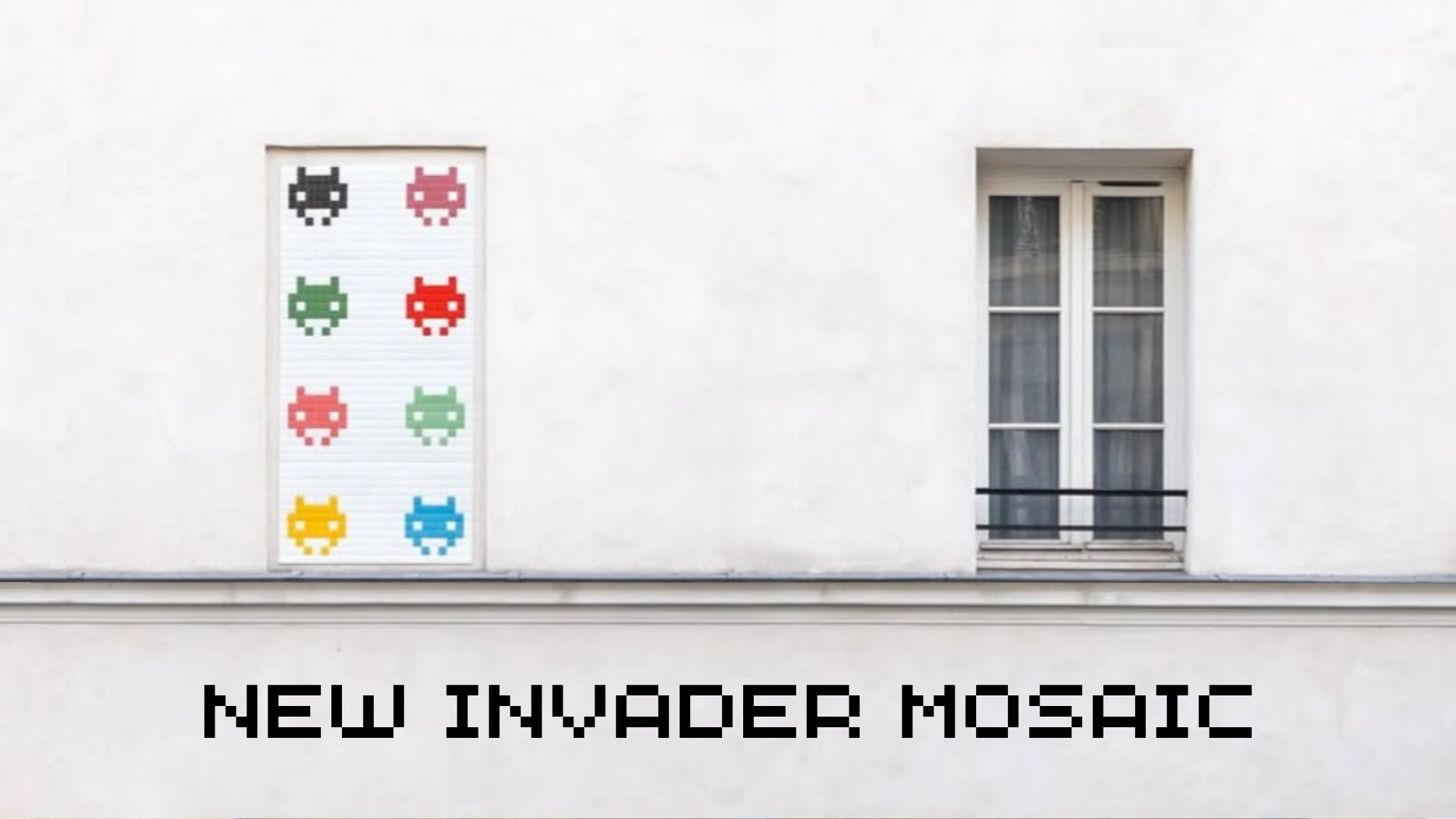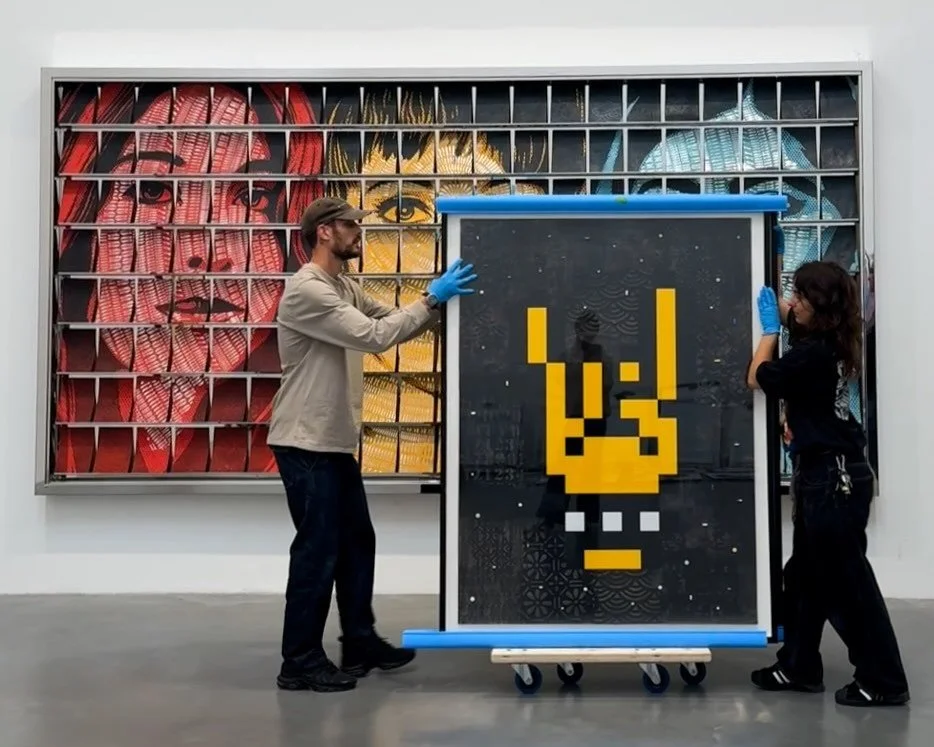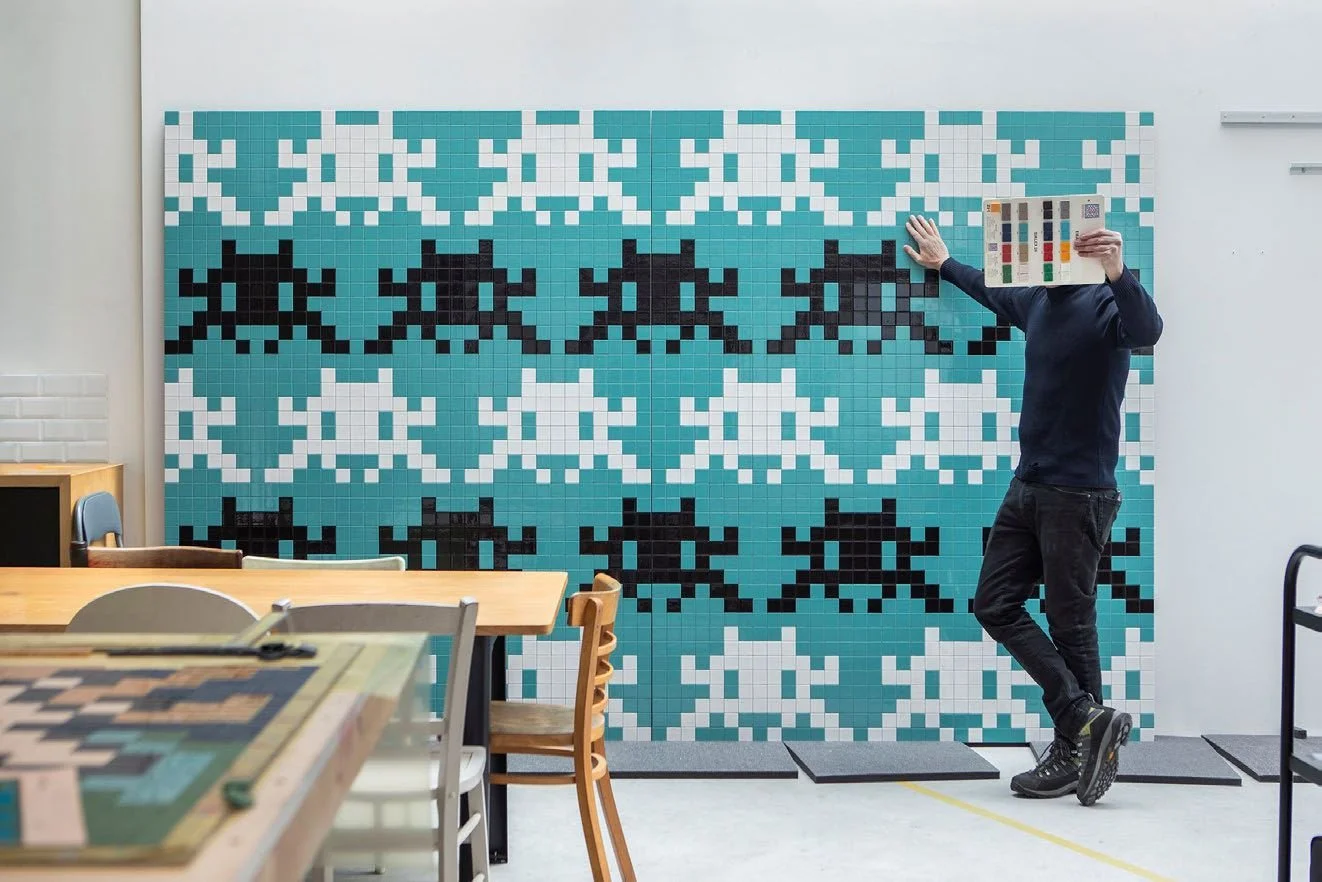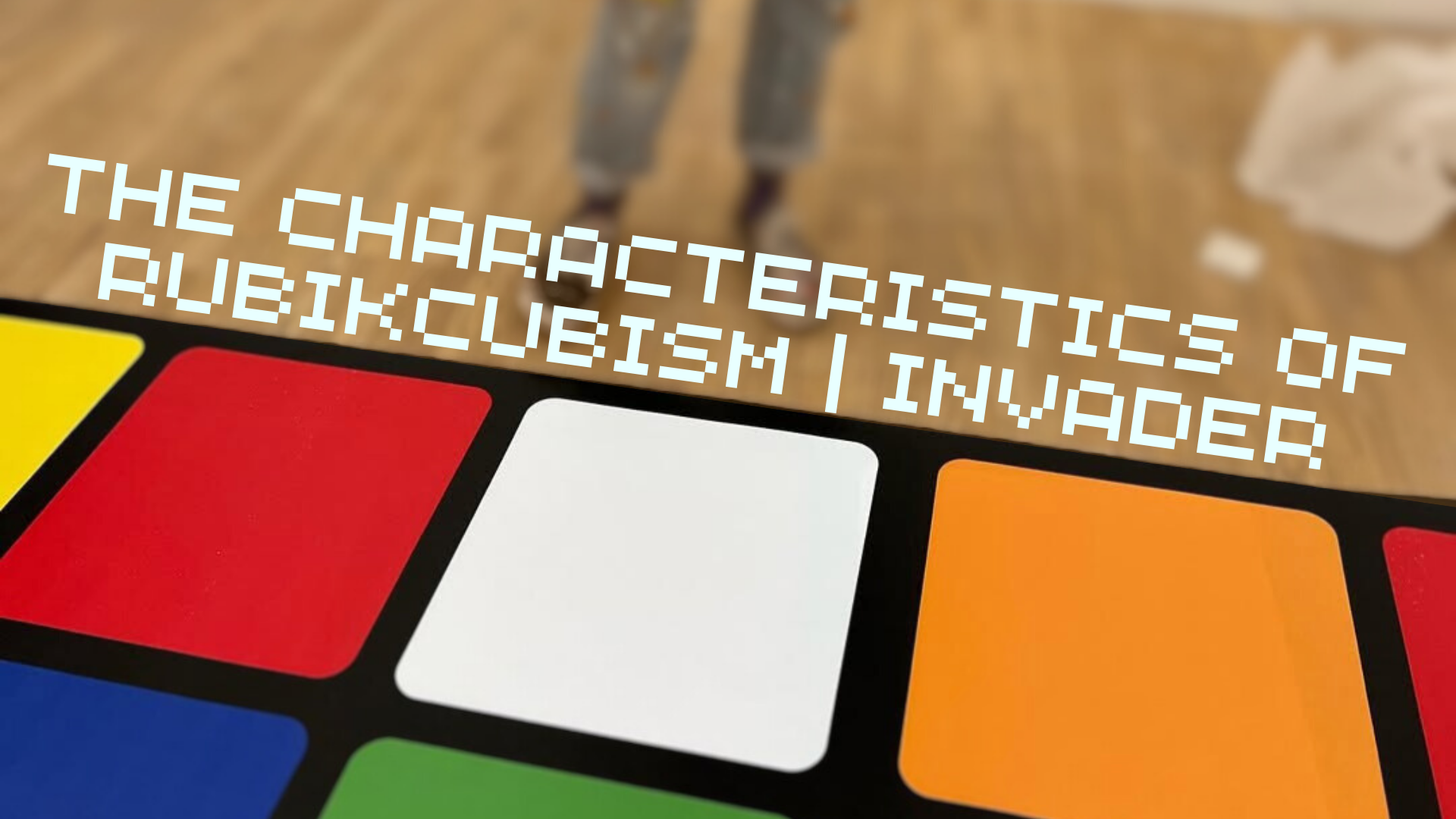The Theft of Invader’s Artworks: A Detailed Documentation
read more
Few names resonate as strongly in urban art as Invader. Known for his iconic mosaic artworks inspired by 8-bit video games, Invader's pieces have invaded cityscapes worldwide. Invader likes to call these Invasions, being part of his project Global Space Invasion. However, with widespread recognition comes a darker side of the issue — jealousy. What is the result of people’s desire for wealth? Thievery.
Introduction
Who is Invader?
Invader is a pseudonymous French street artist who creates and installs mosaic tile artworks resembling characters from video games such as Space Invaders. His works are often strategically placed on public buildings, bridges, and other urban structures, transforming dull urban spaces into playful, thought-provoking art galleries.
The Beauty of Invader's Art
Invader's art is unique in its execution and cultural significance. By using tiles and a video-gamed-inspired color palette, he evokes nostalgia for classic arcade games while simultaneously starting a digital invasion of our physical spaces.
The charm of his works lies in their accessibility. People passing down the streets can enjoy the thrill of discovering pixel art mosaics in the most unexpected places. Invader’s mosaics escape the boundaries of being in a museum and enable regular citizens to enjoy art who pass by.
The cause of Thievery
As Invader is a prominent figure in the art world, with a high demand for his works. Collectors are willing to pay significant sums for authentic pieces. However, the extravagant price tags on his works may violate the principles of Invader’s motive trying to make art for everyone.
The pricey artworks Invader creates undoubtedly led to an increase in theft, especially when they are there lying on the streets. Thus, individuals are removing Invader’s mosaics and selling them on the black market. With this, some pieces have been removed, damaged, and destroyed. People will have less opportunity to see Invader’s mosaics
HK_82
The surprising results
Though many have tried, no one has actually succeeded in removing Invader’s mosaics. By removing the mosaic, the thief is effectively destroying the piece. Due to the type of ceramic tiles Invader uses, stealing the work and ripping the mosaics off the wall in one piece is virtually impossible. As a result, these thieves have to buy ceramics to repair and recreate the work, or even try to add a patina to make it look vintage.
They then try to sell these bad replicas. Not only has the piece lost its authenticity, but these thieves also have no permission to do so. It’s hard to believe anyone would desire to buy unworthy ceramic tiles without authentication, but it happens.
Instead of destroying art, an easy way to own an Invader is to make one yourself or get an official replica with an Alias.
I can only hope that soon enough nobody will be tempted to buy or steal pieces in the streets and therefore this nonsense and painful destruction will stop.
-Invader
Examples
One example of thievery was back in 2017, Paris.
Two suspects disguised themselves as city graffiti removers. The duo sneakily stripped Paris' walls Invader’s street art and mosaics. The city was immediately alerted of the thefts after numerous complaints of their removal on social media, with citizens taking pictures of the workers and asking why the city was removing the mosaics.
Although they were hard to notice at first under disguise, officials were quick to realize those were not one of their agents.
In the end, they were believed to be arrested. Paris officials “decided to file a complaint about abuse of functions” because they “disguised as Paris city workers” to steal artworks.
Similarly, in Hong Kong, the puzzle bobble mosaic was scraped off and brought away by somebody living in the city during nightfall. Luckily, he was captured by a CCTV during his escape.
Impact
From the perspective of the art community, the theft of Invader's art not only affects the artist but also undermines the integrity of his work. Invader has Aliases, which are replicas of existing mosaics, such that people who want to own a unique piece for themselves can get hold of a one-and-only. Mosaics removed from the global wall increased the supply of “official” mosaics by the artist and created a market that shouldn’t even exist.
Each piece is designed for a specific location. With the placement being the most important part of the mosaic, removing it from its location loses its original context and meaning. Not only does the local community lose a piece of public art, but such acts are also against why Invader’s started to create mosaics and share them with everyone.
Security Measures
In response to these thefts, Invader has implemented several security measures.
Some of his newer installations are reinforced with special adhesives to make them harder to remove. At first sight, such a measure can prevent people from easily removing them off the wall. However, this makes the mosaics permanent. If any maintenance has to be done on the wall, the mosaics must be forcefully removed, making it a double-edged sword.
A note from Invader
Invader explains that his street art loses its value and meaning once removed from its original location, akin to its destruction, and such actions violate artists' rights. His mosaics are unsigned and made from easily obtainable tiles, meaning they can't be authenticated. These pieces hold emotional value for local communities and travelers.
He warns potential buyers that most mosaics sold as authentic are likely fake, assembled from new tiles, and the act of removal often destroys the original pieces. Buyers not only contribute to the destruction of public art but are also deceived into paying for something without real value.
Conclusion
The issue of thievery is not unique to Invader. Many street artists face similar challenges as their work gains recognition. The theft and commercialization of street art raise important questions about ownership, public space, and the commodification of art. The thievery of Invader's art highlights a critical issue facing street artists today. While the increasing recognition of street art as a legitimate art form is a positive development, it also brings challenges that must be addressed.
Street art is inherently public, created to be experienced in specific urban contexts. When these works are stolen, they are removed from the public domain and become private property, which contradicts the artists' original intent. The commercialization of street art diluted its impact. What began as a form of social commentary or rebellion can become just another commodity, valued more for its monetary worth than its artistic significance.
By raising awareness of these issues, we can help protect the integrity of street art and ensure that it remains accessible to all. Invader's work reminds us of the joy and wonder that art can bring to our everyday lives, and it is our collective responsibility to preserve and respect that legacy. For Invader, the battle against theft is ongoing, but his resilience and creativity continue to inspire both the art community and the public at large.
Related Topic: The Legality of Invader’s Mosaics
All Rights Reserved
~
We do not own any copyrights to the photos used
~
All Rights Reserved ~ We do not own any copyrights to the photos used ~




















































